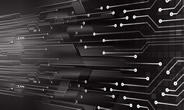An Introduction to Laserprinters A laser printer is a popular type of computer printer that uses a non-impact photocopier based technology. Today's laser printers deliver unparalleled speed, pristine text and graphics with reliable paper handling. When a document is sent to the printer, a laser beam (or in some cases an array of LEDs) "draws" the document on a selenium-coated drum using electrical charges. The drum is then rolled next to another roller coated in toner, a dry powder type of ink. The toner is attracted to and adheres to the charged image on the drum. The toner then is transferred onto the paper by means of electrical charge, and fused to the paper with heat and pressure. IBM introduced the first laser printer in 1975 for use with its mainframe computers. In 1984, Hewlett-Packard (HP) revolutionised laser printing technology with its first HP LaserJet, a compact, fast and reliable printer that computer users could afford. Since then, laser printers have decreased in price and increased in device and print quality. Hewlett Packard continues to be a leading manufacturer as well as others such as Brother, Canon, Lexmark, Oki, Konica Minolta and Xerox. In some cases, it's configured as a multifunction model with printing, scanning, photocopying and fax capabilities. These devices are known as multifunction printers (MFP). They usually have MFP or MFC for multifunction center as part of their model numbers. Typically, the standard models are used for printing whereas newer all-in-one machines can also function as a copier, scanner and fax. Many have user-friendly touchscreen displays. When buying the best model for the needs of a business, some important features to consider, in addition to cheap price and warranty, include the following: Modern machines can handle both black and white and color printing, though color models are more expensive than monochrome (black and white) ones. They offer some strengths over inkjet models: fast print speeds and reasonable costs per page (especially for text output); crisper edges than inkjets, giving a cleaner, more professional look to text and line graphics; more saturated, vibrant color than most inkjets when both are printing on plain paper; resistance to fading; and smudge-proof output. |
||
Smart chips for laser printer, copier, MFP and fax machines. We supply compatible chips to reset your toner cartridge, so you may refill it and use it again. Environmentally friendly!tonertopup toner refills printer inkjet laser cartridge recycling chip resetter reset ink recycle hp brother canon free drum disposal emptiesplease green single use plastic |
 |










